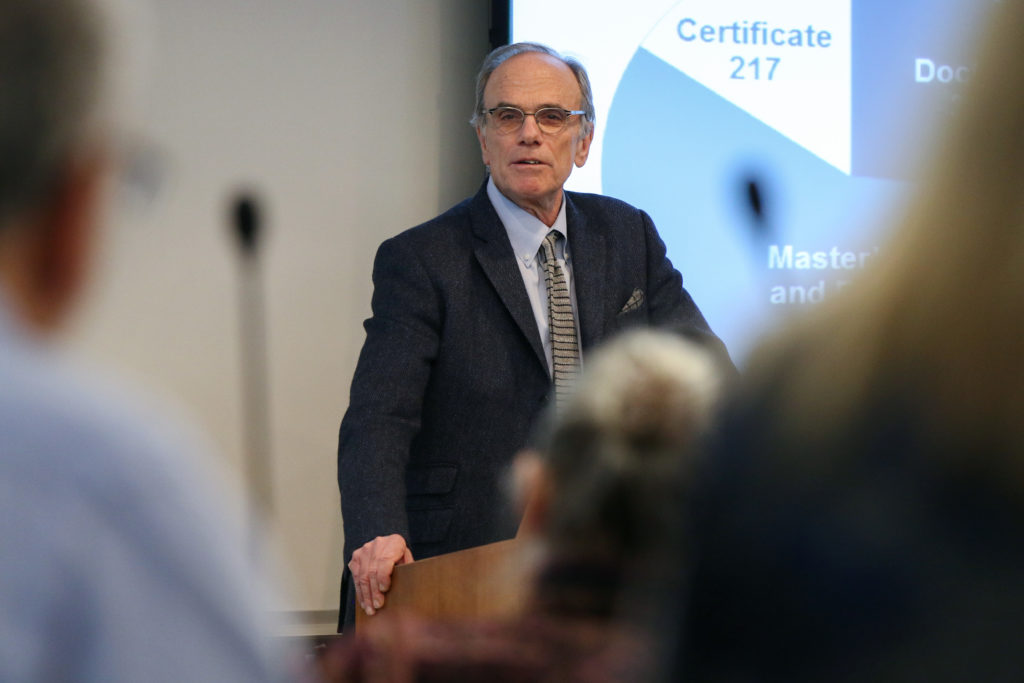Researchers at GW hosted clinical trials for four diabetes drugs and found two type 2 diabetes treatments were more effective than others at lowering blood glucose levels in a study published late last month by the National Institutes of Health.
The clinical trials – hosted by GW and funded by the National Institutes of Health – are a part of a study which found patients who received the drugs liraglutide and insulin glargine, which control blood sugar levels, experienced “controlled” blood glucose levels for about six months longer than patients who received the other two drugs in the trial. Researchers said the study, titled “Glycemia Reduction Approaches in Diabetes: A Comparative Effectiveness” gives two more treatment options for patients and healthcare providers to lower patients’ blood glucose levels.
John Lachin, a professor of biostatistics and bioinformatics at GW and the senior statistician for the GRADE study, said the drugs worked “immediately” in lowering patient’s blood glucose levels, and lowered patients’ likelihood of developing diabetes-related cardiovascular disease. But he said he was disappointed in the results of the study because the effectiveness of the drugs dropped after six months.
“I, for one, am somewhat disappointed that the study wasn’t able to do better,” Lachin said. “And it’s not the fault of the study. It’s the drugs we chose to use just simply weren’t as good in the long term as we had hoped they would be.”
Lachin said the GRADE study, which lasted for eight years, helped fulfill a need for long-term research on existing diabetes treatments. He said researchers test type 2 diabetes treatments for about six to 12 months when they are undergoing Food and Drug Administration approval, short-term research that is insufficient to study the durability of these medicines since diabetes is generally a lifelong disease.
“We felt that it was very important to obtain an assessment of the properties of these drugs over a longer window,” Lachin said.
The GRADE study is the first to test four popular type 2 diabetes drugs against each other without a placebo, according to the NIH.
The study also found that when metformin – an antidiabetic medication – combines with the higher-performing drugs of the study, it results in effective glucose levels about six months longer than patients who took sitagliptin, an antidiabetic medication.
Lachin said GW’s Biostatistics Center received funding for the study from the NIH, provided a statistical design and collected and analyzed the data. He said the trials can help procure research funds that can attract first-rate biostaticians and professors to teach at GW’s Biostatistics Center because GW has the resources to lead “major projects” like the GRADE study trials.
“At GW, we’ve established systems and procedures so that we excel in our ability to coordinate and conduct these studies,” Lachin said.
Metformin – the primary medicine prescribed for type 2 diabetes – is often insufficient to keep blood glucose levels in check alone, and other drugs, like the four tested in the GRADE study in combination with metformin, are needed to supplement it.
GRADE study researchers said they hope the study opens up opportunities for future research in the field of diabetes and gives healthcare providers more treatment options.
David Nathan, a professor at Harvard Medical School and the director of the Massachusetts General Hospital Diabetes Center, said he served as the chair of the GRADE study since its creation more than a decade ago and worked with Lachin during the GW trials. Nathan said he constructed the study to compare new and older drugs instead of testing against placebos like other studies do.
Nathan said further research is needed to perfect treatment for type 2 diabetes, because none of the treatments proved to be particularly effective in keeping patients in the target blood glucose range through the entire eight-year period.
“What that means is that we need to generate new treatments and new strategies for treating these folks,” Nathan said. “Type 2 diabetes is really hard to take care of, and that’s kind of one of the overarching messages that we came out with.”
Robert Cohen, a site investigator for the GRADE study and a professor of medicine at the University of Cincinnati, said patients taking metformin and liraglutide were the least susceptible to cardiovascular disease, but also experienced the highest rates of gastrointestinal symptoms. He said patients using the drugs in the trials were more likely to experience low blood sugar levels and the fraction of people who experienced extreme side effects from the drugs was “remarkably small.”
“Do we have the answer with the tools that we have available? Or do we need new drugs?” Cohen said. “So I think in that sense, GRADE is going to affect policy decisions about driving the research community to develop new classes of drugs.”
Cohen said type 2 diabetes treatment has improved in the last 25 years due to the creation of new drugs and more aggressive goals toward treatments. He said even though doctors have made improvements in diabetes medicine, most drugs aren’t effective at maintaining blood glucose levels on a long-term basis and the study can provide alternative options for controlling glucose levels.
“I am hoping that we are going to come out with some sort of personalized medicine approaches based on the implications of GRADE,” Cohen said.








